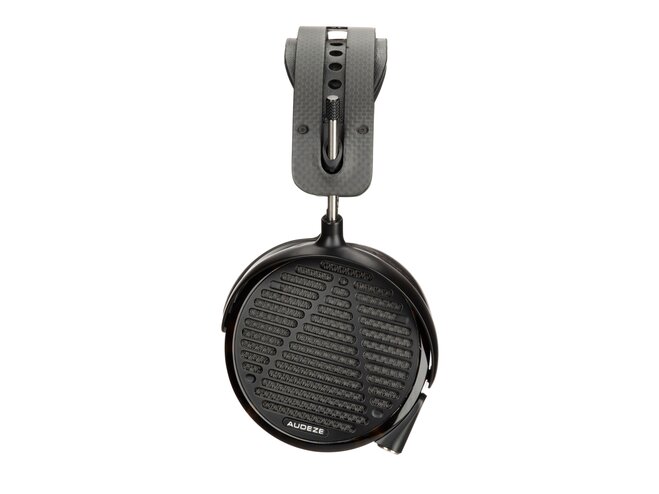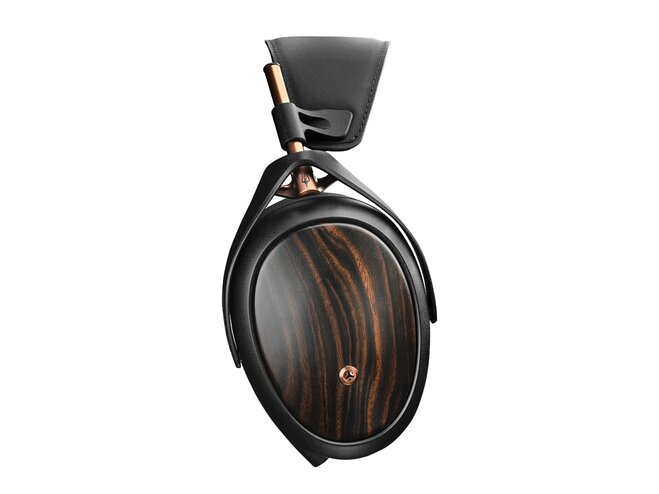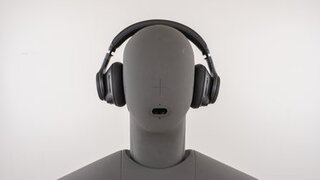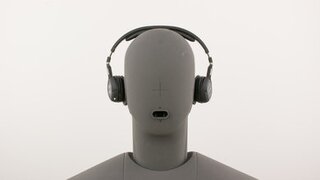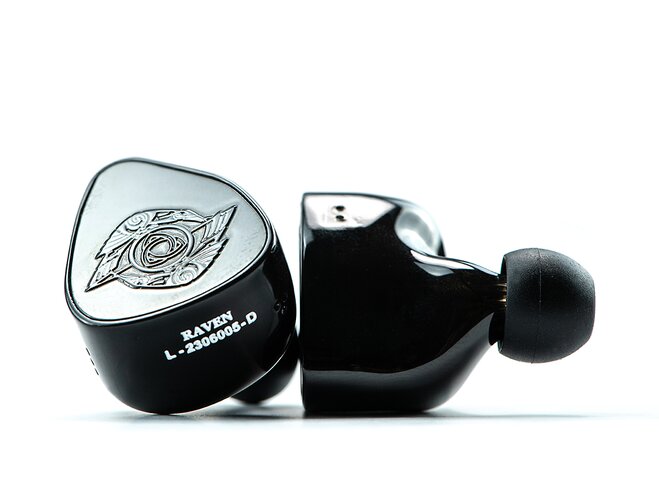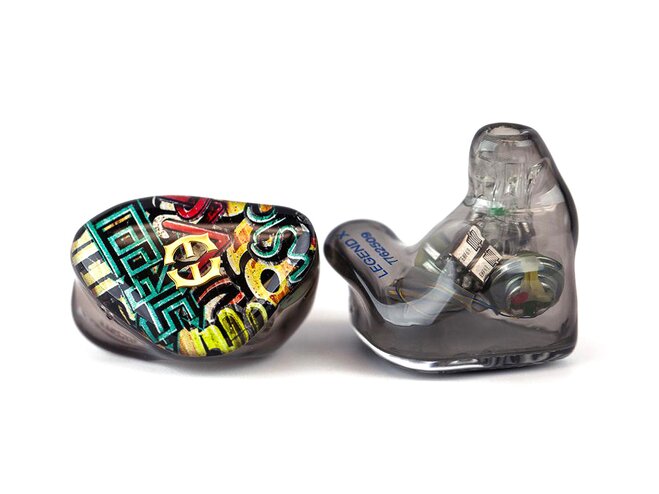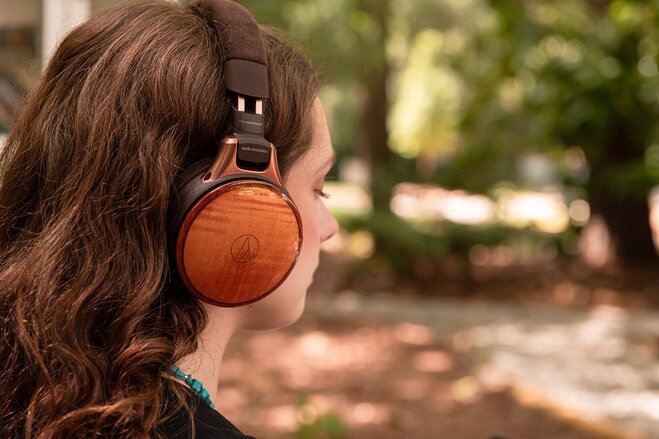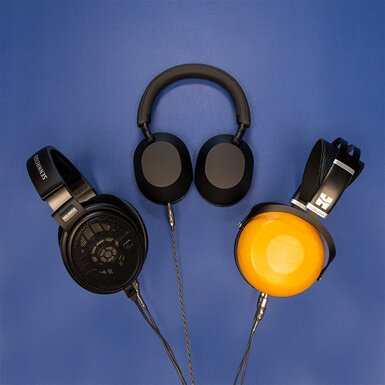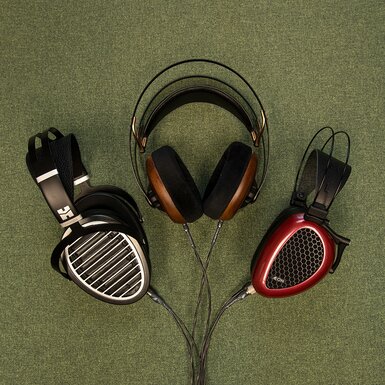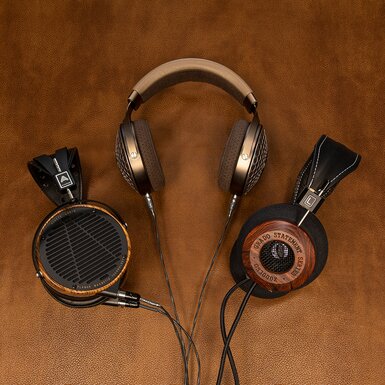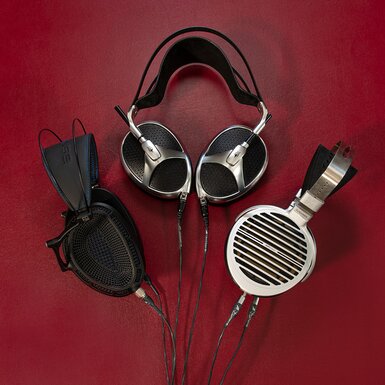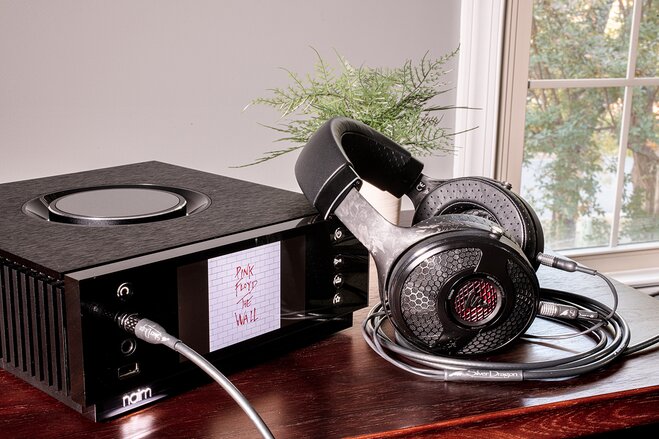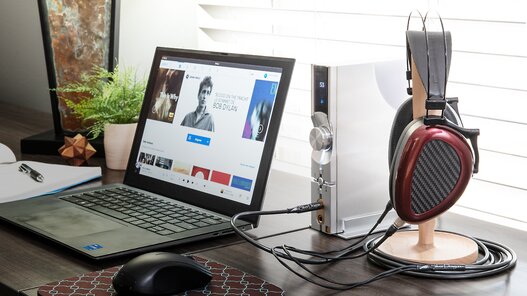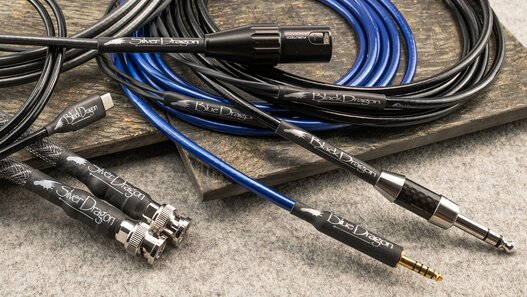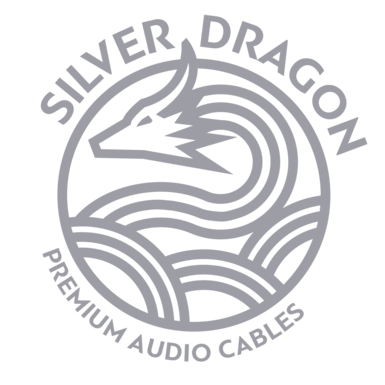Buying Audiophile Headphones: Everything You Need to Know

Audiophile Adventures: 5 Ways to Enhance Your Headphone Buying Journey
In a world full of unlimited Hi-Fi options, it's no easy task to thumb through the hundreds of high-end headphones that exist. Whether you're looking at your first high-end headphone purchase or this is your fifth go-around, it can be overwhelming to navigate the plethora of high-quality headphone brands, options, and styles. After all, there's so much out there:
And that’s just the tip of the iceberg. If you’re going to spend the money you want to get every penny and more out of your purchase, so finding the perfect pair of headphones with the best sound is essential. And it’s really not daunting at all. The best audiophile headphones for you will check off every box — Fit and comfort, listening scenarios, genre preferences, and more.
We’ve created this guide to help you navigate the world of high-end headphones so you can walk away feeling confident in your purchase, having found a new pair of headphones that you love.
Headphone Basics: Style, Shape & Fit
1. What Type of Headphone Do You Want?
Headphones come in many styles, shapes, and sizes from the headphone type and earcup design, all the way down to the way they rest on your head. The high-end headphones market is saturated with so many different styles that the novice audiophile might be left wondering how to differentiate between the types. Let's break it down.
Open-back Headphones vs. Closed-back Headphones
Full-size headphones come in two main styles — Open back and Closed back. But what does that even mean? An open-back headphone is designed with ear cups that are perforated and feature a grill-like pattern on the outside. These tiny holes, or grilles depending on the manufacturer's design choice, are ventilation airways that allow for the free passage of air to vibrate freely around the driver. Sound and airflow in and out of the headphone's earcups.
A closed-back headphone is designed with ear cups that are not perforated and usually feature a solid cover on the outside of the ear cups. As a result, the drivers are not ventilated so no air moves freely in and out of the earcups.
How does this impact the sound? When air can move freely in and out of the earcups in an open-back design, the sound tends to feel larger and wider. It's airier and your ears can breathe easier. The spacious sound can also be perceived through the soundstage. In a closed-back design, the sound is contained by the earcups so you get a more immersive, up-close and personal sound. This can cause listening fatigue after prolonged listening sessions because it isn't as breathable for your ears.
Over-ear Headphones vs. On-ear Headphones
Over-ear and on-ear headphones can look very similar, but the shape and size of the earcups are what differentiate them from one another. Over-ear headphones are typically oversized and will fully encompass your ears. They will have very large earcups that are bigger than your ear, and when you put them on, they will sit comfortably around your ear and not on your ear.
On-ear headphones have earcups that are more compact and smaller than over-ear headphones. When you put them on, the ear cups will rest right on your ears, like a snug-fitting shoe without any extra wiggle room around the toes.
Universal vs. Custom In-Ear Monitors (IEMs)
In-Ear Monitors, which are commonly referred to as IEMs, are small earphones that rest inside your ear canal. Earbuds typically rest at the edge of your ear canal, whereas IEMs create a nice snug fit inside your ear canal. IEMs come in two types: Universal and Custom. Universal IEMs are designed with a one-size-fits-all approach, meaning they will fit most ear canals and you can tailor that fit with the help of different-sized ear tips.
Custom IEMs are specifically designed and manufactured to fit the shape of your ear canals and no one else. An audiologist will take a mold of your ear canal and that impression is what the manufacturer uses to create your custom pair. Because of this, custom IEMs are typically more expensive than universal IEMs, but you're guaranteed a true-to-size fit and a complete seal that isolates ambient sounds around you.
Wireless Headphones & Noise-Canceling Headphones
Thanks to the Apple AirPods and Beats headphones, wireless headphones are incredibly popular. Wireless audiophile-grade headphones are virtually the same as consumer wireless headphones but they boast high-fidelity sound, the latest technology, and higher-quality craftsmanship. Wireless headphones can be truly wireless or feature a headphone jack to attach a detachable audio cable and enjoy a wired listening experience.
Many wireless headphones on the market feature active noise cancellation (ANC) technology, allowing you to tune out the rest of the world around you and hone in on your music. Noise-canceling headphones are defined as headphones that feature active noise-cancellation technology. ANC technology is found mostly in wireless headphones and the feature can be easily turned off and on — So when enabled, they're actively minimizing outside noise.
Headphone Buying Cheat Sheet: Your Roadmap
- Don't Judge a headphone based on how it looks
- Focus on sound quality; ignore the bells and whistles you don't need
- Price Matters — Spend your hard-earned money on headphones made by higher quality brands
2. Price Matters: The Budget-Conscious Shopper
Have you ever stumbled upon a new product, glanced at the price tag, and walked away because of sticker shock? We've all been there at least once and the price of some high-end headphones could throw you into a tailspin. But unlike those Nike sneakers that are overpriced for absolutely no reason, the price of high-end headphones is justified by the materials, design, and technology crafted into each pair.
True, quality high-end headphones aren't mass-produced in some dingy warehouse and then overnight drop-shipped by some megacompany like Amazon. Headphone brands spend their research and development dollars on designs that fit comfortably, and present sound to users, brilliantly. They intentionally design and handcraft their headphones with high-quality materials and the latest technology, guaranteeing you get what you paid for.
So, what's your budget? If you've already identified your budget then you're one step ahead of the game, but if you haven't think about how you'll be using your headphones and for what. Premium features like ANC or the latest Bluetooth codec may cost you more than a standard wired pair of headphones. So keep this in mind — No two headphones are priced the same and great sound doesn't have to cost a fortune!
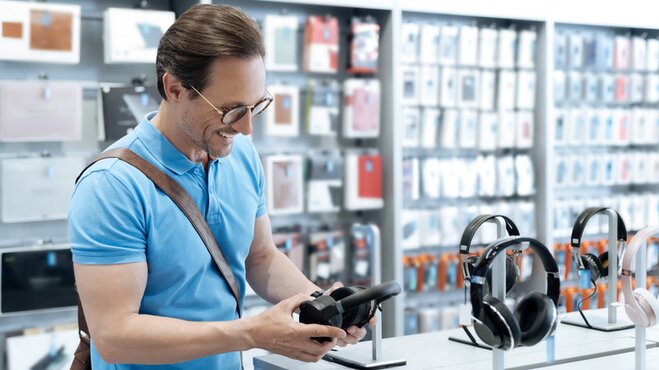
Ask Yourself:
- What is my budget for high-end headphones?
- What brands or models are highly recommended within my budget?
High-End Headphone Buying: Price Points
We find there are four main price points every audiophile uses to navigate high-end headphone buying. Click on any of the price points to view our headphone recommendations for that price category.
3. What's Your Genre Preference and Listening Style?
Believe it or not, there's more that goes into listening to headphones other than simply just plugging them in and putting them on your head. Unlike Apple AirPods and Beats Headphones that complement almost every genre, audiophile-grade headphones are slightly more nuanced. Factors such as materials, driver types, and technology give a headphone the unique sonic characteristics that make it better suited toward one genre, type of listener, and so on. Some brands even have a 'signature sound', like Sony, whose headphones are generally dynamic and fun-sounding.
You want to pick a pair of headphones that reflects your genre preferences and listening style — But how do you do that? Many headphones will work for many types of music, and some headphones will really make your music shine no matter what you're listening to. Chances are you probably bounce between many genres depending on your mood and what you're doing. Or maybe you're a dedicated classical music fan and you never stray from your favorite artist. And that's okay! As headphone experts, it's our duty to identify what headphones work best for what genre and listening style so you pick the pair that best complements your tastes. Keep in mind, that these are all just guidelines. We might recommend certain parameters for choosing a headphone for jazz, for example, but your ears might tell you something different. So let's get into it!

Ask Yourself:
- What type of sound signature do I prefer? (e.g., balanced, bass-heavy, treble-focused)
- What music genres do I primarily listen to?
For example, the Focal Bathys Wireless Headphones sound good with virtually any genre. The Bathys has a neutral to warm sound signature with a bass that is deep and satisfying. You can expect the Bathys to give you a big, exciting sound that puts you in the middle of the action. The Audeze LCD-X Headphone has an incredible low end and is a well-liked choice for anyone who likes Metal and EDM. The Sony MDR-Z1R is a closed-back headphone with a V-shaped sound signature that's bass-heavy and good for genres like EDM and Hip-Hop.
Analytical vs. Warm & Musical Listeners
There are many different ways of listening to music, but broadly speaking you have your so-called 'analytical' listeners and your 'warm and musical' listeners. Analytical listeners are highly attuned to everything they hear-- they want to hear every inhalation of breath and every guitar pluck. They revel in the details and tend to prefer a clear, uncolored sound over heavy-hitting bass and lush sounds. Warm and Musical listeners prefer to immerse themselves in the music without hyper-focusing on details. They tend to prefer a lively, dynamic sound that's full of coloration. You don't have to fall into one category over the other, but identifying your listening style will narrow down your headphone options — And there are plenty of recommendations that suit both listening styles.
Headphones for the Analytical Listener
Headphones for the Warm & Musical Listener
4. Ergonomic Scenarios: When & Where Will You be Listening?
While we agree headphones can indeed be a fashion statement, making your decision based on looks is a rookie mistake. The venue for your listening sessions needs to play a big role in your headphone decision. You wouldn't want to buy a pair of wired headphones if you only plan to use them while working out at the gym. Likewise, the sound leakage from a pair of open-back headphones will be disruptive to others in a shared office.
Ask yourself: Where will I do most of my listening? Will I be using them for short periods or long sessions? Will I be moving around or sitting still?
Your answers will tell you a lot about the type of headphones you need to focus on in terms of style, size/weight, sound leakage, and portability. Some headphones aren't meant for portable use, no matter how you slice and dice it they're strictly made for at-home listening. Others are versatile and can be used in just about every scenario imaginable.
For example, the Sony WH-1000XM5 Wireless Headphones are an option for someone seeking portability and convenience. Protected by a soft shell case, they can be easily stored away in a suitcase or backpack. The Sennheiser Momentum 4 Wireless Headphones have active noise cancellation with an adjustable transparency mode that automatically adapts to ambient noise so you can stay immersed and hear every detail of your music, even in noisy environments.
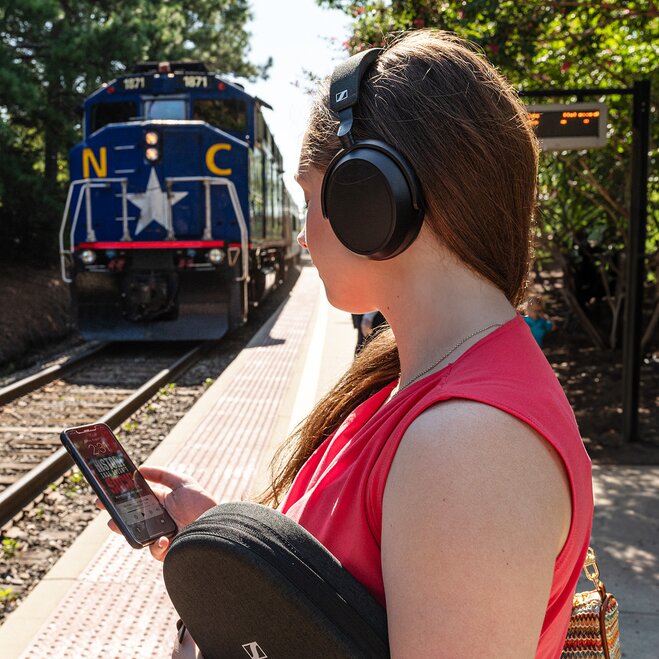
Ask Yourself:
- What is the primary use of the headphones? Where will I be using them most often? (e.g., listening to music, gaming, studio work, home use)
- What is my preferred headphone form factor? (over-ear, closed-back, in-ear, wireless)
- Are there any features I need, such as a built-in microphone, ANC, touch controls?
Headphones for the Homebody
Headphones & IEMs for the World Traveler
5. Add Ons, Audio Gear, and Cables
Whatever headphones you end up buying, they won't exist in a vacuum. After all, your headphones are only conduits to your music; they need to be connected to a source. What will your source be? Will you be listening on your phone? A computer, laptop, or tablet? Do you currently have a speaker system or a headphone system? Is it a desktop or a whole-room system? What are your space requirements?
Ask Yourself:
- What audio sources will I be using? (smartphone, DAP, computer, amplifier)
- Will I need an amplifier or DAC to drive the headphones properly?
- Are the headphones compatible with my existing audio setup and devices?
- Do I need a portable or desktop setup?
- What additional accessories do I need? (cables, earpads, case)
Will You Need an Amplifier or DAC?
Some headphones are easier to drive than others; others are more power-hungry and require a connection to a headphone amplifier. This is a crucial consideration when selecting headphones. That being said, just about any high-end headphone or IEM will benefit from the addition of an amp.
Also, know that amps (and other components like DACs and cables) have their own sound signatures, and you'll also want to explore what the best match(es) might be for your chosen headphones. If you will be buying your headphones first (and we recommend that you do), we can suggest a great DAC/Amp to pair them with. If you already own a DAC/Amp and don't intend to get another, this will be a consideration for whichever headphone you choose.
An example of an easy-to-drive headphone is the Grado SR80X. In general, Grado headphones are easy to drive with a 32-ohm impedance and can be plugged into devices like a computer or smartphone. The HiFiMan SUSVARA planar magnetic headphone is a power-hungry pair of cans that requires additional power. The SUSVARA is a low-sensitivity headphone, meaning it will require more power than the average amplifier to drive it to peak performance. Some suitable headphone amplifiers that we carry at Moon Audio include the Bricasti M3, dCS Lina, and Auris Audio Nirvana IV.
What about a DAP for Portable Use?
A Digital Audio Player, known as a DAP, is the ultimate portable companion. They're essentially iPods on steroids. A DAP has a mobile OS like Android, a built-in high-end DAC and headphone amplifier, and is compatible with all your favorite hi-res music streaming services. The more powerful your headphone or IEM, the more powerful your DAP must be. DAPs come in al shapes and sizes with one of our best sellers being the Sony WM1AM2 Walkman DAP Music Player.
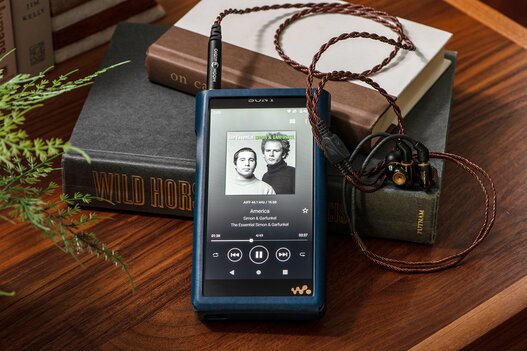
Featured: Sony WM1AM2 Walkman DAP with Meze Advar IEMs and Bronze Dragon IEM Cable
DACs & Headphone Amplifiers for Home/Desktop Use
Portable DACs & Headphone Amplifiers
Portable DAPs
Audio Cables
Equally as important as your source device is your headphone's cable. It's the missing link between you and great sound and stock cables aren't always crafted as meticulously as your headphones. Oftentimes, they're an afterthought by manufacturers. Fortunately for you, we happen to know a thing or two about audio cables.
We design and handcraft our Dragon Audio Cables with the mission to bring you closer to your music. Every cable is handcrafted daily in our Cary, NC Headquarters and customized to fit your headphones and audio gear. Listening to music is a personal experience and we want your headphone cable to reflect your listening preferences — That's why we've created four Dragon Audio Cable lines each with unique sound signatures that sonically enhance the performance of your headphones and IEMs. Upgrading your headphone or IEM cable might not feel like a necessity but a high-quality cable makes a difference when you want the best possible performance from your cans.

Bronze Dragon Portable Headphone Cable
Musical | Inviting
- 8 x 99.99998% UP-OCC Stranded Copper Conductors
- Available in Portable Headphone Cable
Your Quest for Audio Nirvana Starts Here
Picking a pair of headphones shouldn't be a painstaking process. After all, they're meant to enhance your enjoyment and be music to your ears, literally. The headphones you buy might simply come down to your budget. Luckily, you don't always have to compromise on good sound, design and features to stay within a budget. Take the 99 Classics Headphones by Meze Audio, for example. This open-back pair of headphones packs a punch in the sound department but doesn't break the bank at $309. For that price you get an energetic, warm-sounding headphone with walnut earcups and an included carrying case. The Sony WF-1000XM5 Earbuds are a great, discrete portable option that's packed with technology like active noise cancellation, Bluetooth multipoint, and 360 Reality Audio. They can be driven by your smartphone or paired with the Sony NW-A306 Walkman DAP Music Player for the ultimate portable audiophile setup.
Let this guide serve as a reference point throughout your headphone buying journey. If you're stuck between two pairs of cans, flip a coin...just kidding. At Moon Audio, we have comprehensive product reviews and comparisons that you can check out on our YouTube channel and blog.
Featured Products
Related Videos
Dragon Headphone Cables 101
Empire Ears RAVEN IEMs Review: Big, Bountiful Sound
Wireless Headphones: How to Choose

"Either write something worth reading or do something worth writing" - Benjamin Franklin
For Cayla Menges, combining her passion for writing and love for music is the perfect recipe. Cayla uses her love for storytelling and experience as a former newspaper journalist to create content that informs and resonates with music lovers and audiophiles alike. When she's not at Moon Audio, Cayla enjoys bingeing reality TV, knitting, trying her hand at new recipes, traveling and spending time with family and friends.
Moon Audio strives to provide the most relevant collection of curated audiophile products for our customers. Our reviews and product guides are designed to inform our community and share our passion for audio technology. Whether you're just starting out or a seasoned professional, we're glad you joined us.
Want more? Sign up for curated content in your inbox.

BY: CAYLA MENGES |
Read Time: Approx. 12 min. TL;DR: At $2,970, the Luna IEMs represent Astell&Kern's bold step into planar magnetic technology with... Read more

BY: CAYLA MENGES |
Get Better Audio On The Go Portable hi-fi audio is in–because if we can take our excellent sound quality with... Read more

BY: CAYLA MENGES |
TL;DR DAPs have captured the audiophile community as the ultimate portable companion for everyday listening, regardless of the scenario Astell&Kern... Read more
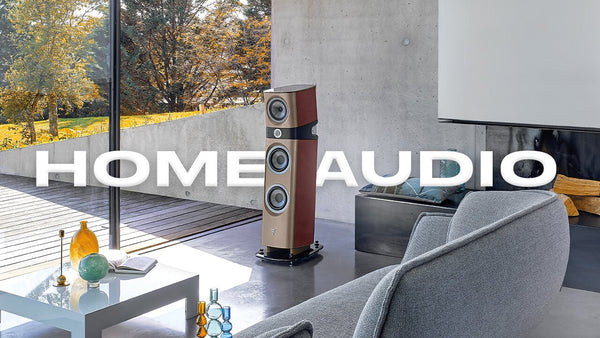
BY: CAYLA MENGES |
Read Time: Approx. 10 min. TL;DR: A high-quality home sound system transforms music into an immersive experience, offering clarity, depth,... Read more
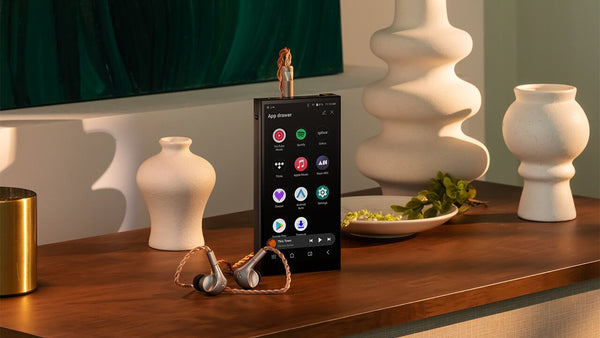
BY: CAYLA MENGES |
PD10 Black Brings SP4000 Features to more DAP Users Astell&Kern has added a new Black finish to its PD10 Digital... Read more

BY: CAYLA MENGES |
Read Time: Approx. 16 min. TL;DR Premium Collaboration at $3,000: A premium collaboration between Astell&Kern and 64 Audio at $3,000,... Read more

BY: CAYLA MENGES |
The Premier Audiophile Headphones of the Year From closed-backs to planar magnetic, wireless, and more, the collection of headphones we... Read more

BY: CAYLA MENGES |
The Best Audiophile-Grade Headphones for Every Budget The best-selling audiophile headphones you should consider buying in 2026 aren't always the... Read more

BY: CAYLA MENGES |
The Best Audiophile Headphones for Everyday Listening From closed-backs to planar magnetic, wireless, and more, the collection of headphones we... Read more

BY: CAYLA MENGES |
Read Time: Approx. 12 min. The Best Wireless Headphones of 2025–And Your Best Bet for 2026 Whether you're an audiophile,... Read more
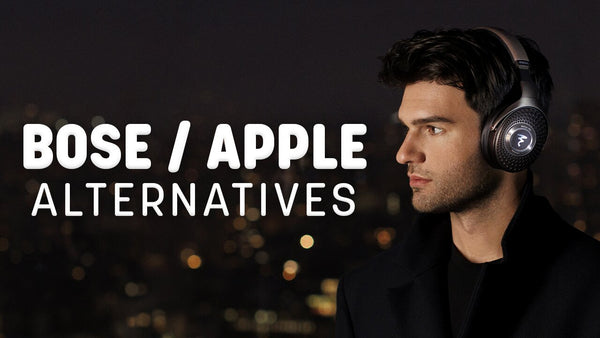
BY: CAYLA MENGES |
Read Time: Approx. 10 min. TL;DR: Apple and Bose headphones offer convenience and sleek design, but fall short on true... Read more
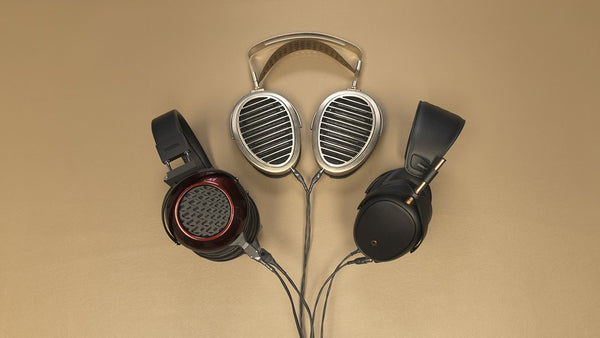
BY: CAYLA MENGES |
Moon Audio shares a list of the best audiophile headphones in the price range of $1000 to $3000 Read more

BY: CAYLA MENGES |
Read Time: Approx. 13 min. Engineering Excellence: The Bricasti Design Philosophy Founded in 2004, Bricasti Design has been crafting high-quality... Read more

BY: CAYLA MENGES |
Read Time: Approx. 12 min. Flagship Headphones Redefining Open-Back Excellence Audio-Technica has long been synonymous with high-quality audio equipment, from... Read more

BY: CAYLA MENGES |
Are Isolation products nonsense or science? We tell you why they're an essential accessory to your HiFi audio gear and... Read more

BY: CAYLA MENGES |
Read Time: Approx. 12 min. TL;DR: At $2,970, the Luna IEMs represent Astell&Kern's bold step into planar magnetic technology with... Read more

BY: CAYLA MENGES |
Read Time: Approx. 14 min. TL;DR: At $4,995, the Madison delivers reference-level sound quality that rivals components costing four times... Read more

BY: CAYLA MENGES |
Read Time: Approx. 15 min. TL;DR: Flagship music streamer/DAC featuring dual DAC chips in dual mono configuration for reference-level sound... Read more

BY: CAYLA MENGES |
Get Better Audio On The Go Portable hi-fi audio is in–because if we can take our excellent sound quality with... Read more

BY: CAYLA MENGES |
Read Time: Approx. 13 min. Engineering Excellence: The Bricasti Design Philosophy Founded in 2004, Bricasti Design has been crafting high-quality... Read more

BY: CAYLA MENGES |
Read Time: Approx. XX min. The Next Evolution in the dCS Lina Series The hi-fi manufacturer dCS Audio is making... Read more

BY: CAYLA MENGES |
Read Time: Approx. 19 min. Welcome to TEAC Audio For over 70 years, TEAC Audio has been one of the... Read more

BY: CAYLA MENGES |
Get Better Audio On The Go Portable hi-fi audio is in–because if we can take our excellent sound quality with... Read more

BY: CAYLA MENGES |
The Best Desktop DACs and Music Streamers for your Audio Setup It's that time of year again, and we're taking... Read more
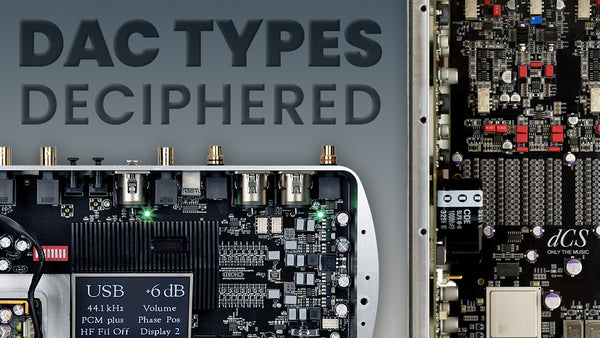
BY: CAYLA MENGES |
Read Time: Approx. 15 min. DACs Deciphered: The 3 Major Types Explained Have you ever wondered how the crystal-clear digital... Read more

BY: CAYLA MENGES |
The Premier Audiophile Headphones of the Year From closed-backs to planar magnetic, wireless, and more, the collection of headphones we... Read more

BY: CAYLA MENGES |
The Best Audiophile-Grade Headphones for Every Budget The best-selling audiophile headphones you should consider buying in 2026 aren't always the... Read more

BY: CAYLA MENGES |
The Best Audiophile Headphones for Everyday Listening From closed-backs to planar magnetic, wireless, and more, the collection of headphones we... Read more
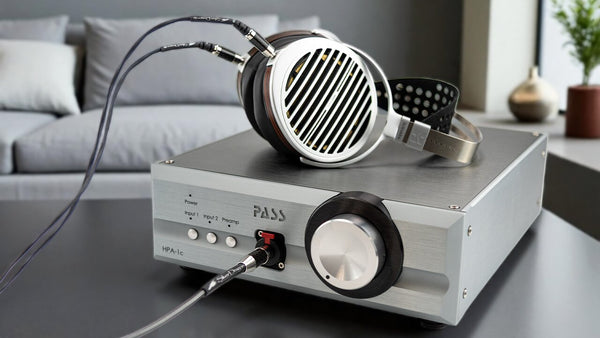
BY: CAYLA MENGES |
Read Time: Approx. 14 min. TL;DR Refined Evolution: Improves on the HPA-1 with an upgraded power supply and 10dB noise... Read more

BY: CAYLA MENGES |
Moon Audio shares a list of the best audiophile headphones in the price range of $1000 to $3000 Read more
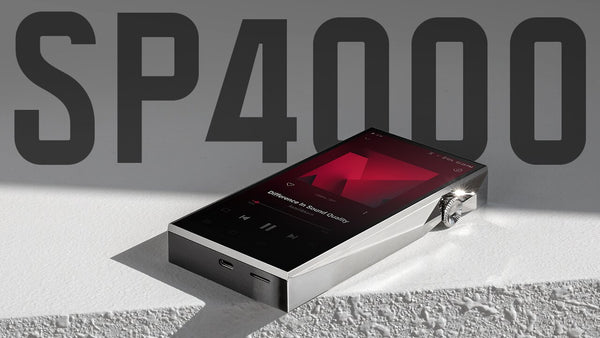
BY: CAYLA MENGES |
Read Time: Approx. 20 min. TL;DR First Astell&Kern DAP with full Android OS and Google Play Store access: Download any... Read more

BY: CAYLA MENGES |
Read Time: Approx. 13 min. Engineering Excellence: The Bricasti Design Philosophy Founded in 2004, Bricasti Design has been crafting high-quality... Read more

BY: CAYLA MENGES |
Read Time: Approx. 12 min. Flagship Headphones Redefining Open-Back Excellence Audio-Technica has long been synonymous with high-quality audio equipment, from... Read more

BY: CAYLA MENGES |
Read Time: Approx. 12 min. TL;DR: At $2,970, the Luna IEMs represent Astell&Kern's bold step into planar magnetic technology with... Read more

BY: CAYLA MENGES |
Read Time: Approx. 14 min. TL;DR: At $4,995, the Madison delivers reference-level sound quality that rivals components costing four times... Read more

BY: CAYLA MENGES |
Read Time: Approx. 15 min. TL;DR: Flagship music streamer/DAC featuring dual DAC chips in dual mono configuration for reference-level sound... Read more

BY: CAYLA MENGES |
Read Time: Approx. 17 min. TL;DR: $499.95 wireless headphone delivering audiophile-grade sound quality with neutral, reference-tuning inspired by the legendary... Read more

BY: CAYLA MENGES |
Read Time: Approx. 11 min. The Best IEMs to Buy in 2025 (And Keep Loving in 2026) The In-Ear Monitor... Read more
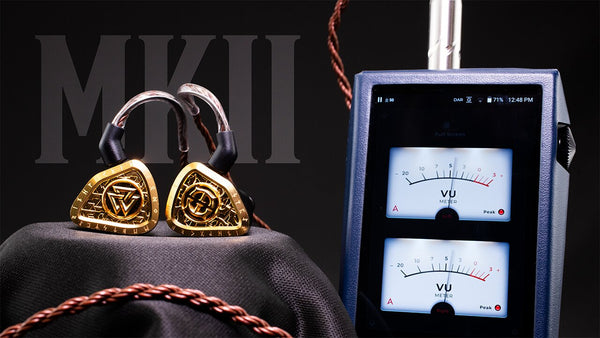
BY: CAYLA MENGES |
Read Time: Approx. 12 min. TL;DR Sound signature: Natural, articulate, and balanced with smoother highs, more dynamic midrange, and controlled... Read more

BY: CAYLA MENGES |
Read Time: Approx. 17 min. TL;DR: $499.95 wireless headphone delivering audiophile-grade sound quality with neutral, reference-tuning inspired by the legendary... Read more

BY: CAYLA MENGES |
The Premier Audiophile Headphones of the Year From closed-backs to planar magnetic, wireless, and more, the collection of headphones we... Read more

BY: CAYLA MENGES |
The Best Audiophile-Grade Headphones for Every Budget The best-selling audiophile headphones you should consider buying in 2026 aren't always the... Read more

BY: CAYLA MENGES |
The Best Audiophile Headphones for Everyday Listening From closed-backs to planar magnetic, wireless, and more, the collection of headphones we... Read more

BY: CAYLA MENGES |
Read Time: Approx. 12 min. The Best Wireless Headphones of 2025–And Your Best Bet for 2026 Whether you're an audiophile,... Read more

BY: CAYLA MENGES |
Read Time: Approx. 14 min. TL;DR: Bridges the gap between cheap sub-$300 turntables and premium $1,500+ models, offering audiophile-grade performance... Read more

BY: CAYLA MENGES |
Moon Audio shares a list of the best audiophile headphones in the price range of $1000 to $3000 Read more

BY: CAYLA MENGES |
The Best Audiophile-Grade Headphones for Every Budget The best-selling audiophile headphones you should consider buying in 2026 aren't always the... Read more

BY: CAYLA MENGES |
Read Time: Approx. 14 min. TL;DR Refined Evolution: Improves on the HPA-1 with an upgraded power supply and 10dB noise... Read more

BY: CAYLA MENGES |
Read Time: Approx. 10 min. TL;DR: Apple and Bose headphones offer convenience and sleek design, but fall short on true... Read more

BY: CAYLA MENGES |
Moon Audio shares a list of the best audiophile headphones in the price range of $1000 to $3000 Read more

BY: CAYLA MENGES |
Read Time: Approx. 13 min. Engineering Excellence: The Bricasti Design Philosophy Founded in 2004, Bricasti Design has been crafting high-quality... Read more

BY: CAYLA MENGES |
Read Time: Approx. 19 min. Welcome to TEAC Audio For over 70 years, TEAC Audio has been one of the... Read more

BY: CAYLA MENGES |
Get Better Audio On The Go Portable hi-fi audio is in–because if we can take our excellent sound quality with... Read more

BY: CAYLA MENGES |
The Best Desktop DACs and Music Streamers for your Audio Setup It's that time of year again, and we're taking... Read more
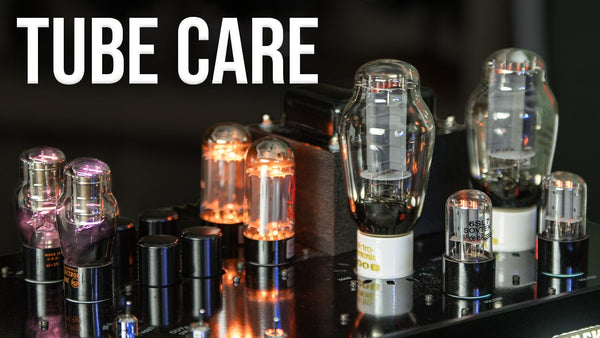
BY: CAYLA MENGES |
Read Time: Approx. 12 min. TL;DR: Know when to replace tubes: Watch for warning signs like excessive noise, blown fuses,... Read more

BY: CAYLA MENGES |
Read Time: Approx. 10 min. TL;DR: A high-quality home sound system transforms music into an immersive experience, offering clarity, depth,... Read more

BY: CAYLA MENGES |
Read Time: Approx. 12 min. Flagship Headphones Redefining Open-Back Excellence Audio-Technica has long been synonymous with high-quality audio equipment, from... Read more

BY: CAYLA MENGES |
Read Time: Approx. 17 min. TL;DR: $499.95 wireless headphone delivering audiophile-grade sound quality with neutral, reference-tuning inspired by the legendary... Read more

BY: CAYLA MENGES |
The Premier Audiophile Headphones of the Year From closed-backs to planar magnetic, wireless, and more, the collection of headphones we... Read more

BY: CAYLA MENGES |
The Best Audiophile-Grade Headphones for Every Budget The best-selling audiophile headphones you should consider buying in 2026 aren't always the... Read more

BY: CAYLA MENGES |
The Best Audiophile Headphones for Everyday Listening From closed-backs to planar magnetic, wireless, and more, the collection of headphones we... Read more

BY: CAYLA MENGES |
Read Time: Approx. 12 min. The Best Wireless Headphones of 2025–And Your Best Bet for 2026 Whether you're an audiophile,... Read more

BY: CAYLA MENGES |
The Premier Audiophile Headphones of the Year From closed-backs to planar magnetic, wireless, and more, the collection of headphones we... Read more

BY: CAYLA MENGES |
The Best Audiophile-Grade Headphones for Every Budget The best-selling audiophile headphones you should consider buying in 2026 aren't always the... Read more

BY: CAYLA MENGES |
The Best Audiophile Headphones for Everyday Listening From closed-backs to planar magnetic, wireless, and more, the collection of headphones we... Read more

BY: CAYLA MENGES |
Read Time: Approx. 12 min. The Best Wireless Headphones of 2025–And Your Best Bet for 2026 Whether you're an audiophile,... Read more

BY: CAYLA MENGES |
Moon Audio shares a list of the best audiophile headphones in the price range of $1000 to $3000 Read more
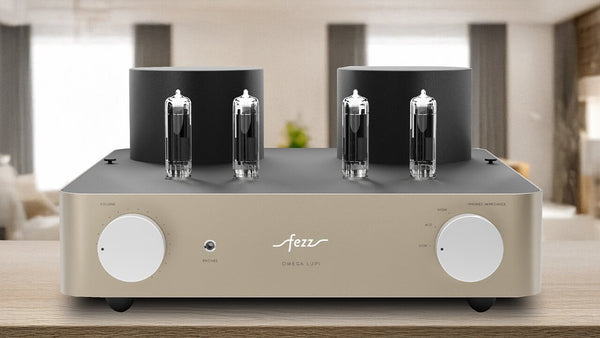
BY: CAYLA MENGES |
Read Time: Approx. 15 min. TL;DR 7W per channel of sheer power driving even the most demanding headphones like the... Read more

BY: CAYLA MENGES |
The Premier Audiophile Headphones of the Year From closed-backs to planar magnetic, wireless, and more, the collection of headphones we... Read more

BY: CAYLA MENGES |
The Best Audiophile-Grade Headphones for Every Budget The best-selling audiophile headphones you should consider buying in 2026 aren't always the... Read more

BY: CAYLA MENGES |
The Best Audiophile Headphones for Everyday Listening From closed-backs to planar magnetic, wireless, and more, the collection of headphones we... Read more

BY: CAYLA MENGES |
Read Time: Approx. 11 min. The Best IEMs to Buy in 2025 (And Keep Loving in 2026) The In-Ear Monitor... Read more

BY: CAYLA MENGES |
Read Time: Approx. 12 min. The Best Wireless Headphones of 2025–And Your Best Bet for 2026 Whether you're an audiophile,... Read more

BY: CAYLA MENGES |
Get Better Audio On The Go Portable hi-fi audio is in–because if we can take our excellent sound quality with... Read more

BY: CAYLA MENGES |
Read Time: Approx. 12 min. TL;DR: At $2,970, the Luna IEMs represent Astell&Kern's bold step into planar magnetic technology with... Read more

BY: CAYLA MENGES |
Read Time: Approx. 11 min. The Best IEMs to Buy in 2025 (And Keep Loving in 2026) The In-Ear Monitor... Read more
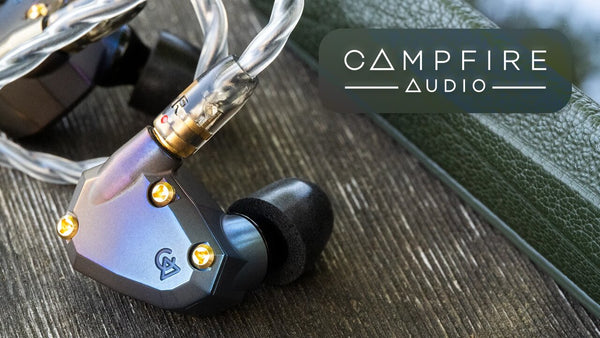
BY: CAYLA MENGES |
Read Time: Approx. 12 min. The Art of Joyful Sound In a world where most high-end audio companies prioritize function... Read more

BY: CAYLA MENGES |
Read Time: Approx. 10 min. TL;DR: Sub-$2K Flagship Performance: Both the U6t and U12t IEMs deliver exceptional value under $2,000... Read more

BY: CAYLA MENGES |
Read Time: Approx. 13 min. TL;DR: Luxury Legacy at $3,999: Created by Jack Vang in collaboration with 5-time Grammy winner... Read more

BY: CAYLA MENGES |
Read Time: Approx. 16 min. TL;DR Premium Collaboration at $3,000: A premium collaboration between Astell&Kern and 64 Audio at $3,000,... Read more

BY: CAYLA MENGES |
Get Better Audio On The Go Portable hi-fi audio is in–because if we can take our excellent sound quality with... Read more

BY: CAYLA MENGES |
The Best Desktop DACs and Music Streamers for your Audio Setup It's that time of year again, and we're taking... Read more
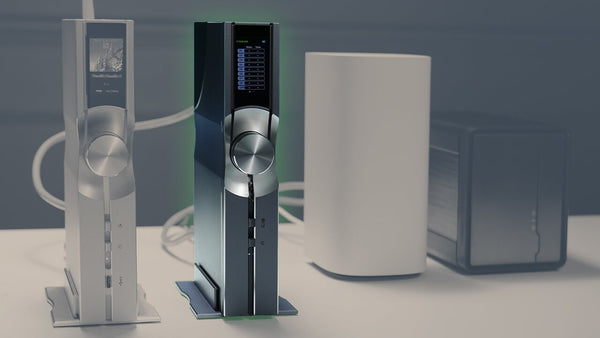
BY: CAYLA MENGES |
Read Time: Approx. 12 min. TL;DR: Audiophile network switch designed to eliminate noise, jitter, and electromagnetic interference in hi-fi systems... Read more

BY: CAYLA MENGES |
Read Time: Approx. 15 min. TL;DR: Flagship music streamer/DAC featuring dual DAC chips in dual mono configuration for reference-level sound... Read more

BY: CAYLA MENGES |
Read Time: Approx. 16 min. The Essential Accessory for Hi-Fi Audio Systems Ask any audiophile what components are the most... Read more

BY: CAYLA MENGES |
The Premier Audiophile Headphones of the Year From closed-backs to planar magnetic, wireless, and more, the collection of headphones we... Read more

BY: CAYLA MENGES |
The Best Audiophile-Grade Headphones for Every Budget The best-selling audiophile headphones you should consider buying in 2026 aren't always the... Read more

BY: CAYLA MENGES |
The Best Audiophile Headphones for Everyday Listening From closed-backs to planar magnetic, wireless, and more, the collection of headphones we... Read more
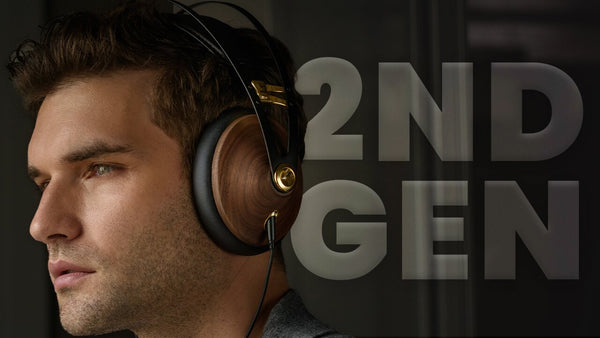
BY: CAYLA MENGES |
Read Time: Approx. 12 min. From Warm Fun to Balanced Precision Honoring Ten Years of Success Ten years is an... Read more

BY: CAYLA MENGES |
Moon Audio shares a list of the best audiophile headphones in the price range of $1000 to $3000 Read more

BY: CAYLA MENGES |
Read Time: Approx. 10 min. TL;DR Mid-century modern aesthetic with walnut wood ear cups and radial PC-ABS grilles inspired by... Read more

BY: CAYLA MENGES |
TL;DR DAPs have captured the audiophile community as the ultimate portable companion for everyday listening, regardless of the scenario Astell&Kern... Read more

BY: CAYLA MENGES |
Read Time: Approx. 12 min. From Warm Fun to Balanced Precision Honoring Ten Years of Success Ten years is an... Read more

BY: CAYLA MENGES |
PD10 Black Brings SP4000 Features to more DAP Users Astell&Kern has added a new Black finish to its PD10 Digital... Read more
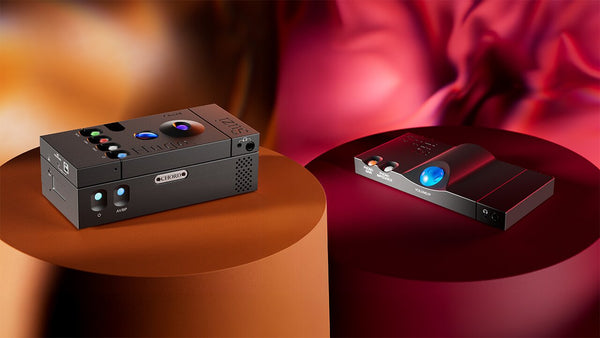
BY: CAYLA MENGES |
Read Time: Approx. 9 min. TL;DR Stackable and modular design allows components to work independently or together as an integrated... Read more
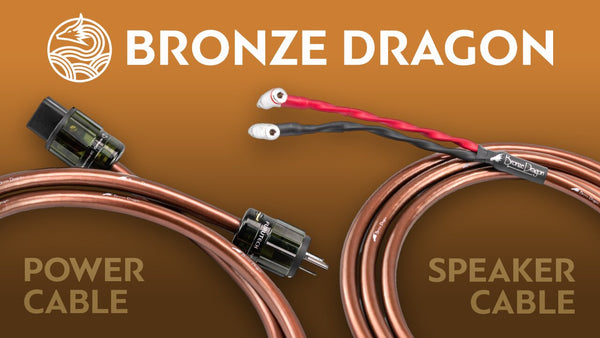
BY: CAYLA MENGES |
Unveiling Our Latest Dragon Audio Cable Innovations Discover our newest Dragon Cable innovations, the Bronze Dragon Power Cable and Bronze Dragon... Read more

BY: CAYLA MENGES |
Unveiling Our Latest Dragon Audio Cable Innovation Discover our newest Dragon Cable innovation, the Bronze Dragon Headphone Cable. Featuring groundbreaking... Read more

BY: CAYLA MENGES |
Read Time: Approx. 17 min. TL;DR: $499.95 wireless headphone delivering audiophile-grade sound quality with neutral, reference-tuning inspired by the legendary... Read more

BY: CAYLA MENGES |
The Best Audiophile-Grade Headphones for Every Budget The best-selling audiophile headphones you should consider buying in 2026 aren't always the... Read more

BY: CAYLA MENGES |
The Best Audiophile Headphones for Everyday Listening From closed-backs to planar magnetic, wireless, and more, the collection of headphones we... Read more

BY: CAYLA MENGES |
Read Time: Approx. 11 min. The Best IEMs to Buy in 2025 (And Keep Loving in 2026) The In-Ear Monitor... Read more

BY: CAYLA MENGES |
Read Time: Approx. 12 min. The Best Wireless Headphones of 2025–And Your Best Bet for 2026 Whether you're an audiophile,... Read more

BY: CAYLA MENGES |
Read Time: Approx. 10 min. TL;DR: Apple and Bose headphones offer convenience and sleek design, but fall short on true... Read more

BY: CAYLA MENGES |
Read Time: Approx. 17 min. TL;DR: $499.95 wireless headphone delivering audiophile-grade sound quality with neutral, reference-tuning inspired by the legendary... Read more

BY: CAYLA MENGES |
Read Time: Approx. 12 min. The Best Wireless Headphones of 2025–And Your Best Bet for 2026 Whether you're an audiophile,... Read more

BY: CAYLA MENGES |
TL;DR DAPs have captured the audiophile community as the ultimate portable companion for everyday listening, regardless of the scenario Astell&Kern... Read more

BY: CAYLA MENGES |
Read Time: Approx. 10 min. TL;DR: Apple and Bose headphones offer convenience and sleek design, but fall short on true... Read more

BY: CAYLA MENGES |
Moon Audio shares a list of the best audiophile headphones in the price range of $1000 to $3000 Read more
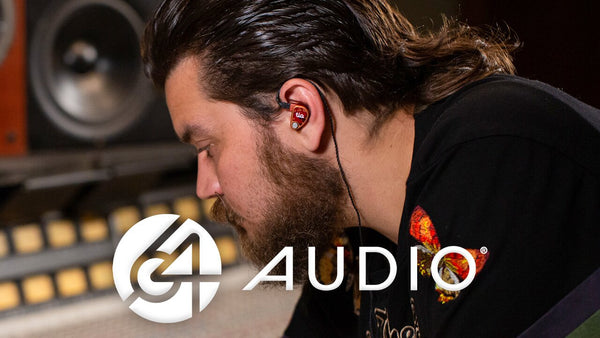
BY: CAYLA MENGES |
Read Time: Approx. 20 min. TL;DR First tubeless IEM design with proprietary TIA (Tubeless In-Ear Audio) technology for natural sound... Read more

